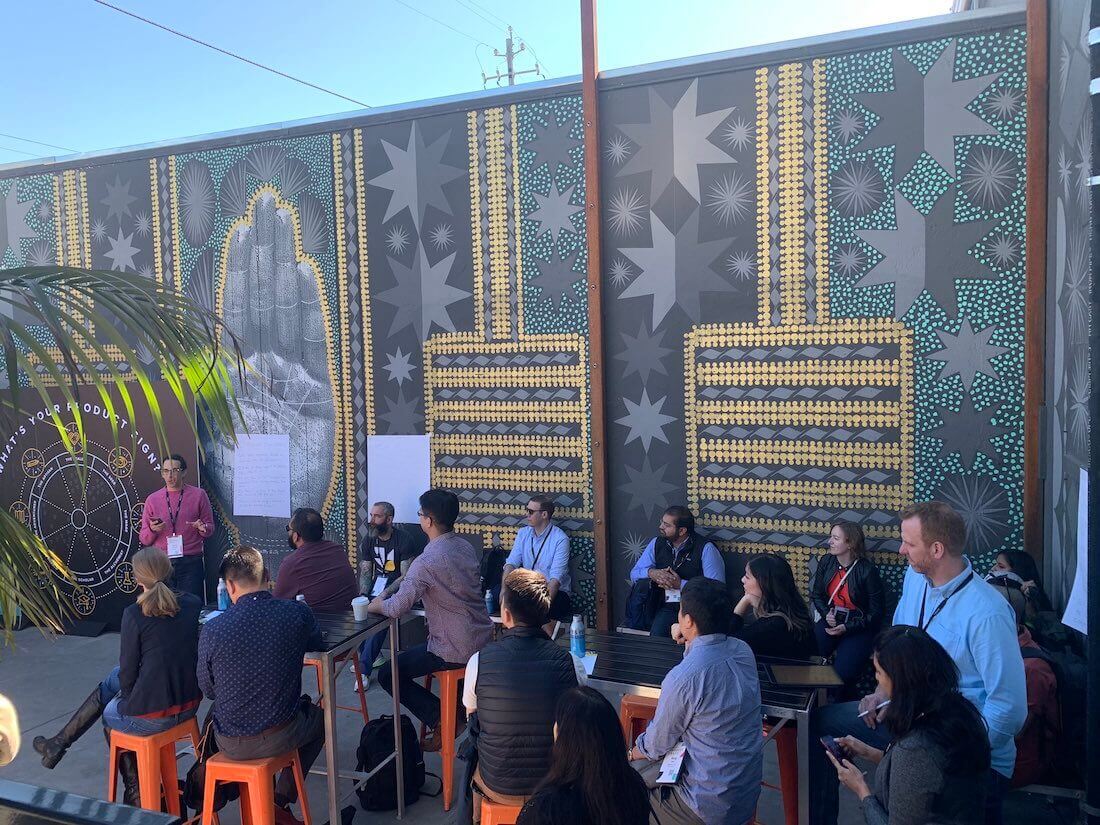Last year, over 500 product people gathered in San Francisco for the first-ever ProductCraft Conference. And this past Tuesday, we brought our unique brand of product event back to the Bay for another full day of sessions, workshops, panels, and networking opportunities. Like last year, the event was a huge success, drawing product people from a variety of industries and professional backgrounds. Of course, it didn’t hurt that it was a gorgeous 70-degree sunny day and that our venue, the Midway, was such a unique and stylish space.

During the speaker sessions, leadership panel, and interactive breakout workshops, a number of themes started to emerge. Some we expected based on our presentation content, but others were a bit of a (good) surprise. Here are four of the main ones.
Retention and product stickiness
Our first speaker of the day, Hiten Shah of FYI, gave a talk called “Making Products Stick: How PMs Can Improve Retention.” His team at FYI completed an in-depth analysis of PM job descriptions and made a shocking discovery. The word “retention” didn’t show up in a single one of them. In his view (and in ours), that needs to change.
A number of other speakers agreed with Hiten’s assessment. The topic of retention also came up during the State of Product Leadership panel, featuring Justin Dilley of FullStory, Lisa Reeves of Zenefits, and Sachin Rekhi of Notejoy. When moderator Brian Crofts asked whether PMs should be measured on retention, all three of our panelists raised their “thumbs up” signs in agreement. It’s probably safe to say that we’ll be seeing a greater focus on “stickiness” metrics among product teams.
“Whole picture” product management
During his session on “truthiness in data,” Niels Hoven of Cloudflare reminded attendees of an important truth. “What gets measured gets managed,” he said. “And what gets measured also gets gamed.” When data becomes a goal instead of an indicator, that’s a sign of trouble.
To drive this point home, Niels Hoven brought up the parable of the blind men and the elephant. One man grabs a leg and says, “This is a tree.” Another touches the trunk and declares it a snake. Without perspective on the whole picture, PMs may be flying blind when it comes to their customers’ product journey.

During several of the breakout workshops, attendees shared how their teams were moving beyond pure data to build a holistic understanding of their product. Some had implemented strict customer communication schedules, while others had specific strategies for gathering, organizing, and storing customer feedback and feature requests.
Knowing your (business) numbers
Many PMs, no matter which rung of the career ladder they’re currently on, wonder how they can take that next step in their role. For some, that means managing people. For others, it might involve taking on multiple product lines. For still others, it can mean gaining or polishing technical skills.
If a PM wants to make the move to GM or even CEO, however, they need to know their numbers. That means having a deep understanding of your product’s P&L. During the State of Product Leadership panel, Lisa Reeves of Zenefits said that PMs are perfectly suited to CEO roles. Being a product manager teaches you to manage shifting priorities, work across teams, and deal with setbacks. A CEO needs to do all of these things well. The one piece that is missing “on the job” for many PMs is a focus on financials.

In her talk on the PM career path, Nancy Wang of AWS Backup shared that senior PMs on her team are responsible for P&L, which gives them a leg up if and when they do decide to make the move to the C-suite.
Maniacal focus on the customer
Several speakers mentioned the importance of pairing qualitative numbers with quantitative feedback. Data is only one piece of the product management puzzle. Qualitative feedback from customers is the other. Without empathy for the customer and a commitment to understanding their needs, your product strategy will lack that “human element.”
Plus, an intense focus on customer needs typically leads to improvement in key product metrics. Hiten Shah said it best: “Retention is the result of customer obsession.”
Thanks again to everyone who attended ProductCraft Conference: San Francisco. If you couldn’t make it, no worries. Tickets are still available for our London and Boston events, and we’ll be sharing more content from the event here on ProductCraft.com.

